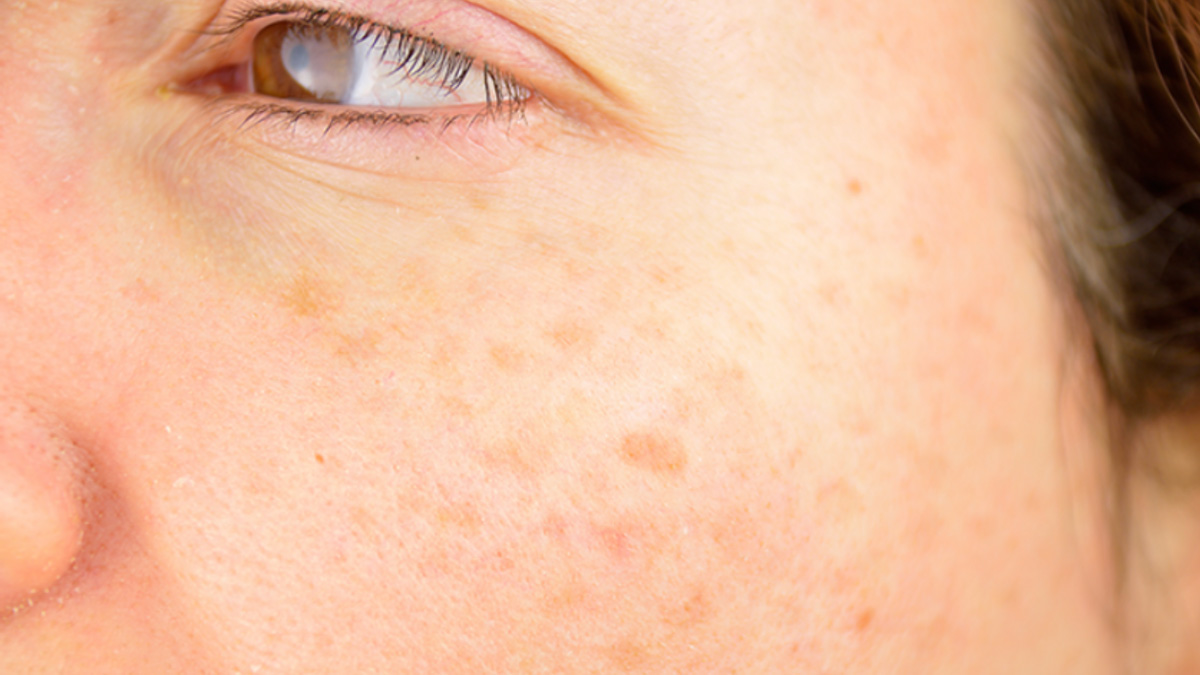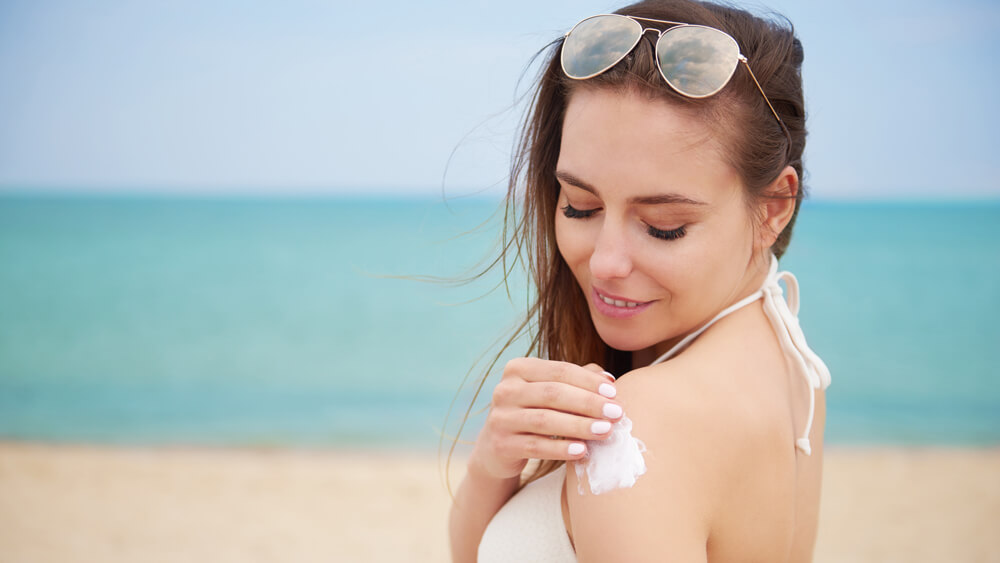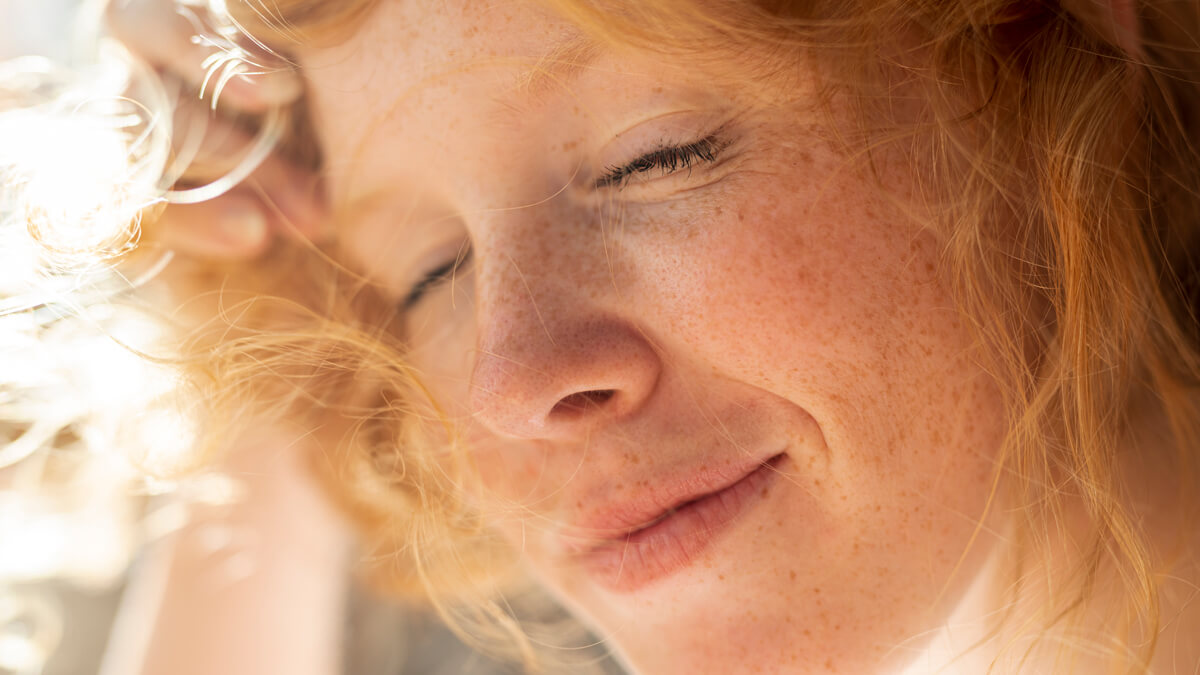Are you tired of dealing with unsightly sunspots on your skin? You’re not alone. Many people suffer from this common skin issue, especially after spending time in the sun during summer. But it’s not just those occasional sunburns from activities like playing tennis or going to the beach that cause sunspots. Even everyday activities done without proper sun protection, such as mowing the lawn without a hat or running errands without applying sunscreen, can contribute to their formation. Keep reading to discover everything you need to know about treating and preventing sunspots.
What are sunspots?
Sunspots, also known as age spots or solar lentigines, are small, discoloured areas of the skin that are caused by prolonged sun exposure. They are usually brown in colour and appear on areas of the skin that are most exposed to the sun, such as the face, hands, and arms. They are not cancerous, but they can be unsightly and may be a source of concern for many individuals. It is important to protect the skin from sun exposure and to use sunscreen regularly to prevent the formation of sunspots. In the case of existing sunspots, there are treatments options available that can help to reduce their appearance.
Characteristics of Sunspots:
- Flat, pigmented spots that are usually round or oval
- May appear as a singular spot or in clusters
- Range from light brown to black
- Vary from 0.2-2.0 centimeters (about 0.79 in) in diameter
- Usually appear on the face, back of hands, shoulders, upper back, arms, or feet
What causes sunspots?
Sunspots are caused by several factors, including:
- Prolonged exposure to ultraviolet (UV) rays: Sunlight and artificial sources such as tanning beds have UV rays that can penetrate the skin and cause damage.
- Overproduction of melanin: UV rays stimulate the production of melanin, the pigment that gives colour to our skin, hair, and eyes. When there is an excessive production of melanin in certain areas of the skin, it can lead to the formation of sunspots.
- Genetics: Some people may be more susceptible to sunspots due to genetics.
- Fair skin: People with fair skin are more likely to develop sunspots as they have less melanin to protect their skin from UV rays.
- History of sun exposure: Individuals who have a history of excessive sun exposure are more likely to develop sunspots.
- Aging: Sunspots are more common in older individuals due to the accumulation of UV damage over time.
It is important to keep in mind that while sunspots do not pose any harm to the skin, they indicate an excessive exposure to sunlight and later damage to the skin.

Who is at risk of sunspots?
Sunspots don’t discriminate and while they may appear on anyone and everyone, some individuals are at a higher risk, such as people with fair skin, light eyes and hair, freckles, moles, and a history of skin cancer.
But anyone can get sunspots, and it’s worth it for your skin health to take good practices to treat and prevent them.
High-risk groups include those who:
- Aged 30 and above
- Frequently spend time under the sun or in tanning beds
- Have red hair and fair skin
Are sunspots something to be worried about?
Sunspots are generally harmless, but it is important to be aware that the early signs of skin cancers, such as melanoma and basal cell carcinoma, can resemble solar lentigines. If you have any concerns about your sunspots, it is recommended to consult a dermatologist or physician. They may perform a skin biopsy to decide if the spots are cancerous.
You can also use the ABCDE rule to determine if your age spot is a cause for concern or not:
- Asymmetry: One half of the age spot looks different from the other half
- Borders: Blurry, irregular edges around the spot
- Colour: Different shades of colours within a solar lentigo
- Diameter: The spot is unusually large (i.e., more than 6 millimeters, about 0.24 in, in diameter)
- Evolving: Age spot changes in colour, size, shape, or texture
How can I prevent sunspots from forming?
To achieve the best skin health and prevent sunspots, it is crucial to start protecting your skin at an early age. Daily use of a broad-spectrum, high-SPF sunscreen (at least 30) applied 15-30 minutes before sun exposure is essential. We recommend choosing sunscreens that have physical blockers, such as zinc oxide or titanium dioxide, as they provide a physical barrier against both UVA and UVB rays. For added protection, consider using tinted sunscreens with iron oxide, which protect against visible light.
In addition to sunscreen, incorporating other sun protection measures, such as wearing wide-brimmed hats and UPF clothing, can provide an extra layer of defense. Remember to reapply sunscreen every two hours to support its effectiveness. To further reduce sun damage, it is best to avoid direct sun exposure during peak UV hours, typically between 10 a.m. and 4 p.m.
Prevention Tips:
- Avoid tanning beds or solariums: The desire for a golden, sun-kissed skin tone is a popular beauty ideal, but the use of tanning beds to achieve this can result in sunspots and even skin cancer. Therefore, it is recommended to avoid using tanning beds altogether.
- Limit sun exposure: During the hours of 10 a.m. and 4 p.m., the sun’s rays are the most intense; it is best to take precautions by seeking shade to protect against age spots and sunburn. To protect the skin from both types of UV rays, when indoors use SPF 30+ and for those seeking outdoor protection use SPF 50+. The Skin Cancer Foundation suggests applying 2 tablespoons of sunscreen to exposed areas of the body, including a “nickel-sized dollop to the face alone” to ensure enough SPF is used. To protect your skin from the sun, apply sunscreen 30 minutes before going outside and reapply every 2 hours. For those who engage in sports, use a water-resistant sunscreen and reapply after sweating or swimming to ensure it stays effective.
- Wear broad-spectrum sunscreen

How can I treat sunspots?
In addition to using the above tips to prevent age spots from darkening or increasing in number, there are also various treatment options available to lighten and remove them. It’s worth noting that, as with any treatment, it’s always best to consult a skincare professional before undergoing any type of treatment especially if you have any medical condition that may disagree with the treatment. They can help you understand the best course of action for your specific skin type and concerns.
Skin Needling
Skin needling is effective in the treatment of sunspots because it helps to lighten and smooth out the affected area by removing the damaged, pigmented skin cells and promoting the production of new skin cells.
Hydro Dermabrasion
Hydro dermabrasion can be effective in the treatment of sunspots as it can help to lighten and even out the pigmentation of the affected area. It can also help to stimulate the production of collagen and elastin, which can help improve the overall tone and texture of the skin.
However, it’s important to note that hydro dermabrasion may not be suitable for everyone, and sunspots should be evaluated by a dermatologist before starting any treatment. Hydro dermabrasion may not be effective on severe sunspots or with severe sun-damage. In those cases, a dermatologist may recommend other treatment options such as chemical peels, laser therapy or topical medications.
Chemical Peels
Chemical peels are a type of exfoliating treatment that uses a chemical solution to remove the top layer of skin. They are effective in treating sunspots because they help to lighten and smooth out the affected area by removing the damaged, pigmented skin cells. Chemical peels come in different strengths and formulations, and can be used for various skin concerns, including sunspots.
A superficial or light chemical peel uses alpha hydroxy acids (AHAs) such as glycolic acid or lactic acid, which gently exfoliate the skin’s surface, removing dead skin cells and revealing brighter, smoother skin. This type of peel is suitable for mild sunspots and mild hyperpigmentation.
A medium chemical peel uses trichloroacetic acid (TCA) which goes deeper into the skin, effectively removing damaged skin cells and stimulating collagen production, which can help improve the overall tone and texture of the skin. This type of peel is more effective for moderate sunspots and hyperpigmentation.
A deep chemical peel uses phenol, which penetrates deeply into the skin to remove damaged skin cells, stimulate collagen production, and improve the overall tone and texture of the skin. This type of peel is the most effective for severe sunspots and hyperpigmentation, but also has a higher risk of complications and longer recovery time.
Microdermabrasion
This treatment uses a device to gently remove the top layer of skin, revealing new, unblemished skin below. It’s a non-invasive procedure and can be done at a dermatologists office.
Cryotherapy
This treatment uses liquid nitrogen to freeze the sunspot, causing it to peel off. It is done in a dermatologists office.
Lasers
Lasers can target pigmentation specifically and destroy melanin cells to reduce the appearance of sunspots. It’s an invasive procedure that should be done by a trained professional.
